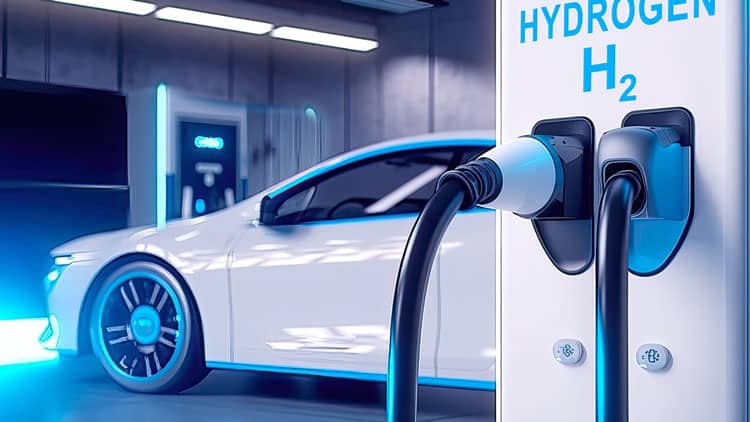While EVs have been at the forefront of the green mobility movement, this shift to hydrogen technology signals a bold new direction. Imagine a world where zero-emission engines dominate the roads and fossil fuels are a thing of the past. As the global push for sustainable transportation intensifies, this future may be closer than we think.
With the planet facing the dual challenges of traffic congestion and air pollution, there’s increasing demand for cleaner, more efficient ways to move people and goods. Sustainable mobility is all about reducing the harmful impact of travel on the environment—whether we’re talking about private cars, public transport, or freight vehicles. One of the most iconic names in the EV industry is pushing the boundaries even further with hydrogen-powered engines.
Goodbye Electric, Hello Hydrogen: The Next Step in Sustainable Transportation

Bergen Engines, a Norwegian company with deep expertise in clean energy technologies, has developed a new engine based on a blend of hydrogen and natural gas. This move is set to revolutionize the industry, with the company aiming to introduce a fully hydrogen-powered engine by the end of 2024. While Norway is often hailed as a paradise for electric vehicles, this development suggests that hydrogen might be the next frontier in the quest for zero-emission transportation.
Hydrogen engines, like those from Bergen Engines, could become the backbone of sustainable mobility for cars and marine and industrial vehicles. By injecting high-pressure gas directly into the engine’s cylinders, this technology maximizes efficiency without sacrificing power. Even more impressive, the combustion process avoids harmful greenhouse gas emissions without needing catalytic converters to control pollution.
With a current engine blend allowing up to 25% hydrogen (up from 15% in 2022), the company is edging closer to realizing its vision of an utterly hydrogen-based system. This transition promises reduced emissions, greater fuel flexibility, and a significant leap toward the global energy transition.
How Governments Can Help More People Switch to EVs and Hybrids
The rise of hydrogen-powered engines and EVs offers a promising path toward a greener future. However, the shift from traditional cars to EVs and hybrids still requires concerted efforts from governments worldwide. Here are some recommendations on how policymakers could ease the transition for everyday drivers:
- Incentives and Rebates: Many consumers need more time to switch due to the high upfront cost of EVs. Governments could expand rebate programs, offering financial incentives like tax credits, cash rebates, or reduced registration fees for EV and hybrid purchases.
- Building Charging and Hydrogen Infrastructure: Widespread adoption depends on the availability of charging and refueling stations. Governments could invest in developing accessible, fast-charging networks and hydrogen fueling stations in urban and rural areas, ensuring convenience for all drivers.
- Tax Breaks and Lower Tolls: Offering tax breaks or reduced toll rates for EVs and hybrids would make these vehicles more attractive. For instance, cities could eliminate congestion charges for zero-emission cars to encourage use in busy areas.
- Mandating Green Fleets: Governments can lead by example by transitioning public sector vehicles to EVs or hydrogen-powered alternatives. This shift would reduce emissions from public services and show a solid commitment to sustainability.
- Education and Awareness Campaigns: Many consumers still need to learn about the long-term savings and environmental benefits of switching to EVs or hybrids. Governments could launch awareness campaigns to educate the public on the financial and ecological advantages of switching.
As technologies like hydrogen engines and EVs evolve, governments have a unique opportunity to accelerate the transition to cleaner transportation options. Providing the proper support and incentives can help make sustainable mobility a reality for millions worldwide.


